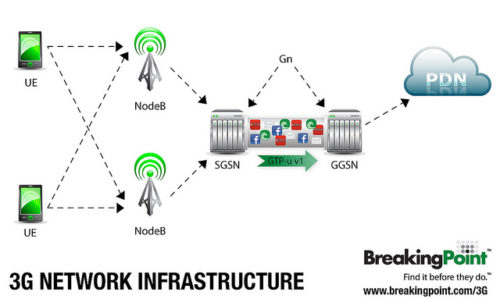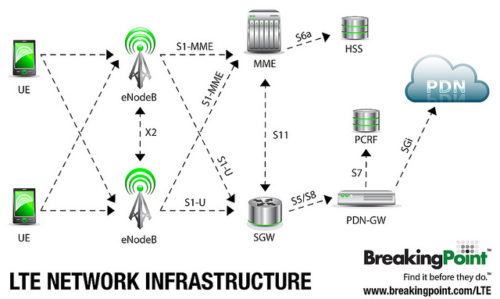The Difference between 3G and LTE
We love to browse the net on our phones. We receive instant messages, pictures and gif’s – all through the internet. You check Facebook, receive e-mails and take it all for granted.
But what are the technologies behind this? How are we able to do these things on our phones at such speeds?
First there was 1G, which was horrible. Next came 2G. Finally, 3G made it possible to comfortably browse the internet on mobile. Then came 4G and LTE, which made it not only comfortable, but convenient.
Let’s take a look at the differences between 3G and LTE.
What is 3G?
Short for “third generation”, 3G is a mobile communication standard. Service provider networks make use of 3G enabled technologies. This allows us to connect to the internet through our mobile phones.
Before 3G there was 2G. People spent a lot of time waiting for web pages to load back then. It was frustrating. But 3G changed that. It was first commercially launched in Japan in 2001, and it’s been around ever since.
3G is the third evolution of a project launched in the early 80’s. That’s almost 21 years of development.
What is LTE?
LTE is a newer version of 3G. LTE is short for “long term evolution”. It’s derived from the journey of mobile connectivity.
LTE is the pinnacle of many years of development. It’s often compared to 4G. But the standards for 4G are actually higher than LTE’s current capabilities. We’ll get to the speeds in a minute.
Let’s first have a look at what other differences there are between these two.
3G vs. LTE
As mentioned before, these two are family. LTE is the modern newcomer whereas 3G has been around for a while. LTE is a lot faster, but in high traffic areas can be slower than 3G.
The problem is congestion. When it’s rush hour in the city, it’s sometimes faster to take the back roads than the freeway.
While 3G can be faster than LTE in rare circumstances, the norm is that LTE is much faster. There is also 3G HSPA+, which is faster than its 3G cousin. But it’s still no match, under ideal circumstances, to LTE.
Network stability can also play a vital role in connection speeds. A stable 3G network can outperform an unstable LTE network.
3G vs. LTE Speeds
Now we’re down to the raw data. Maximum speeds are an unquestionable source of data. No more wondering. Let’s see how they shape up.
3G runs up to 7.2Mbps. That was mind-blowingly fast back when it first launched. But it took the networks and service providers a while to get to that point. This is the case with all the technologies.
The maximum speed takes a while to achieve.
3G HSPA+ runs at up to 52 Mbps.
LTE runs up to 100Mbps. But this is only when moving rapidly, like in a car. Stationary LTE can run up to 1Gbps. That’s up to twenty times faster than HSPA+. 1Gbps is true 4G speed. But again this is just a benchmark. LTE isn’t quite there yet.
Still impressive, don’t you think?
So which is better?
3G can sometimes run better than LTE. But this is the exception, not the norm. If you’re choosing devices, always choose a device that is LTE compatible. If you’re choosing service providers, choose one with LTE.
Is the LTE not great in your area?
Then the same applies. You see, service providers are always expanding and improving their networks. It could be that 3G performs better than LTE in your area for now. But that won’t be the case for long.
If you experience poor LTE speeds in your area, report it to the service provider. It could be that they aren’t aware of the problem. Drawing their attention to it could have your connection running at lightning speed before long.
The Downside to LTE
There is a downside. Just like with cars. Sure, that Ferrari might look good. It might be fast. You may want it.
But at least your minivan won’t hit a barrier at 200mph and explode.
So LTE is super-fast, especially when compared with standard 3G. You browse the web, loving how responsive the sites are on your new connection. Everything is fine.
Then the bill hits.
Depending on where you are in the world, data can cost a lot. If you’re not careful about how you use your data, you could end up with a massive bill come month end.
3G doesn’t normally have this problem.
If you’re based in the US, you can consult Tom’s guide for unlimited data plans. Notice that LTE connectivity is not unlimited. This is where things could get expensive, if you breach the cap and forget to switch to 3G.
But in South Africa, for example, there’s no such thing as unlimited data. South Africans can pay as much as $23 per gig for data bundles. Out-of-bundle rates could be over $150 a gig.
Where in the world are you?
Where do you live and what do you pay for data? Do you feel that your country’s data rates are fair?
We’d love to hear from you in the comments below.
Summary
| 3G | LTE |
| Speeds of up to 7.2Mbps. | Speeds of up to 1Gbps. |
| Old technology with stable, established servers. | New technology. Servers can be unstable in rare cases. |
| Good for older model phones. | Good for newer model phones. |
- The Difference between Trello and Evernote - July 13, 2017
- Difference between iCloud Drive and Dropbox - July 13, 2017
- Difference between Garmin Vivofit 2 and Fitbit Charge - July 13, 2017
Search DifferenceBetween.net :
Leave a Response
References :
[0]https://www.nttdocomo.co.jp/english/corporate/about/outline/history/index.html
[1]https://www.lifewire.com/how-fast-are-4g-and-3g-internet-speeds-3974470
[2]https://www.macobserver.com/tmo/article/why-the-older-slower-3g-network-is-sometimes-better-than-4g
[3]http://www.tomsguide.com/us/best-phone-plans,review-2953-3.html
[4]https://www.flickr.com/photos/breakingpoint/5987554713
[5]https://www.flickr.com/photos/breakingpoint/5988117724
[6]https://www.flickr.com/photos/breakingpoint/5988117724


